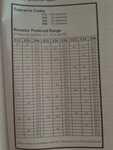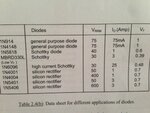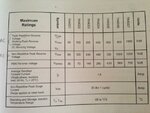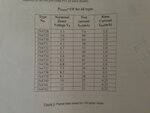Ethan221009
Newbie level 3

Follow along with the video below to see how to install our site as a web app on your home screen.
Note: This feature may not be available in some browsers.




I'm guessing this is a school question. It isn't difficult to deduce the components from the figures given:
R1 has 1.3V dropped across it and it's value is 10 Ohms. Using Ohms law the current through it can be worked out (I = V/R) = 1.3/10 = 0.13A or 130mA.
40mA is lot of current for a power indicator LED but the only figure given so assume R2 must drop 11V down to 4.1V at 40mA so it's value is (R = V/I) = 6.9/0.04 = 172.5 Ohms
Assuming no other current is drawn from the output, the current NOT flowing through R2 must be 130 - 40mA = 90mA so if D6 is a 5.1V Zener diode, R2 drops 11V - 5.1V at 90mA making it (R = V/I) = 5.9/.09 = 65.55 Ohms.
Brian.






